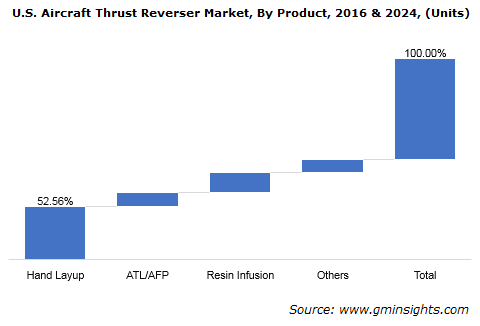A brief outline of aircraft thrust reverser market in terms of the extensive contributions made by pivotal industry players
Publisher : Fractovia | Published Date : 2018-03-19Request Sample
The last few years have witnessed aircraft thrust reverser market registering a commendable growth rate on account of the product’s increasing installation in aircrafts. Indeed, their deployment is rather vital, as they are used for maintaining marginal safety in aircraft operations. Additionally, the product is known to provide additional power back and deceleration effect during landing. As this mechanism plays a crucial role in aircraft safety, many aircraft manufacturers have been inking strategic deals with the renowned giants in aircraft thrust reverser industry. For instance, Dassault Aviation has recently signed a contract with UTC Aerospace System for supplying an advanced nacelle system for the Falcon 6X business jet of Dassault. Under this deal, UTC Aerospace will develop an integrated power plant which comprises engine build-up system, thrust reverser, fan cowls, and inlet. Contracts such as the aforementioned are rampant in this business space, thereby encouraging other companies to follow suit and focus on novel product development.
U.S. Aircraft Thrust Reverser Market, By Product, 2016 & 2024, (Units)

In 2013, the joint venture between Safran Nacelles, renowned suppliers of thrust reversers, aerostructures, and engine nacelles, and Middle River Aircraft Systems of GE aviation, called Nexcelle made it to the headlines for developing next-generation thrust reversers. These products can be used in jet engines and prove to be highly useful for aircraft manufacturers as they possess less weight, improved reliability, and excellent maintainability. In fact, this newly electric thrust reverser actuation system had eliminated the use of D-doors with the implementation of the O-Duct. Considering the numerous benefits of incorporating an electric mechanism, many aircraft manufacturers are giving preference for the same. Estimates in fact, claim that aircraft thrust reverser market size from the electric mechanism will increase at a CAGR of 5.5% over 2017-2024.
As on today, turbulence is a major cause behind most of the in-flight injuries. The turbulence often accompanies visible weather fronts and thunderstorms. In this regard, the leading aircraft manufacturer, Boeing is focusing on the development of new technology for making air mobility safer, environmentally friendly, and more fuel efficient. In a bid to improve research activities across the organization, Boeing has also been inking strategic partnerships with other tech giants. For instance, in 2014, Boeing signed long-term agreement with Spirit AeroSystems for accomplishing the increasing requirement of aircraft structural parts. Through this agreement, Spirit signed on to mainly supply thrust reversers, pylons, and fuselage. Taking into account the huge requirement of aircraft structural parts, many giants in aircraft thrust reverser market have been making consistent investments in state-of-the-art technologies.
Speaking along similar lines, it is prudent to mention that in recent years, an increasing number of contracts have been inked among aircraft manufacturers and structural parts providers. Price benefits and accomplishing production target are the principal perspectives that both the contending parties bear in mind. For instance, Airbus has lately signed deals with several companies in aircraft thrust reverser market, a couple of which are explained below:
- In 2017, Woodward Inc., signed a contract with Airbus to supply a Thrust Reverser Actuation System (TRAS) for its new A320neo aircraft.
- In another instance, Airbus collaborated with Bombardier for the A320neo aircraft in which it has installed a next generation PW1100G engine.
- In order to provide TRCOS (thrust reverser cowl opening system) actuators to Airbus A320neo aircraft, Triumph Group, Inc., has signed a long-term agreement with Safran Nacelles.
Airbus’s business strategy is likely to help the firm maintain long-term relations with vendors and suppliers. Aligning with this strategy, numerous other aircraft manufacturers are likely to penetrate aircraft thrust reverser industry.
The in-depth involvement of various participants in aircraft thrust reverser market with regard to product development and innovation is poised to generate a competitive business scenario in the future. The development of next-generation lightweight products will also enable aircraft manufacturers to reduce fuel consumption. Nowadays, as most of the people are giving preference to air mobility, the demand for fleets has been increased tremendously. In this scenario, the fuel reduction pointer would play a vital role in maintaining energy efficiency. All in all, aided by the rising demand for aircraft and highly efficient aerospace components, aircraft thrust reverser industry size is slated to cross USD 2 billion by 2024.